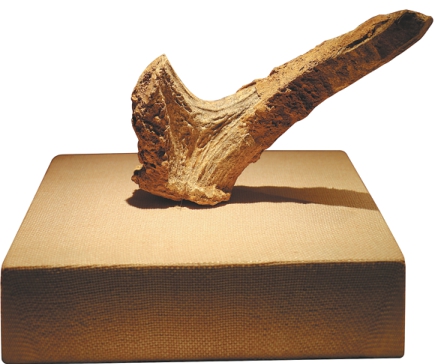 |
|
Relics unearthed in Wanshouyan fill in a blank among excavations of Paleolithic period (2 million years to 10,000 years ago) in Fujian.[Photo provided to China Daily] |
Chen worked frantically, in vain-until he encountered a man-made floor.
"It must be from the Paleolithic period," he thought.
Yan invited the country's top anthropologists and archaeologists from Beijing to the dig. The 120-square-meter limestone-block floor, dating back 40,000 years, is believed to be an early example of human "interior design".
Over 70 stone tools were also unearthed.
"We must evaluate the significance of Paleolithic discoveries from a global perspective in terms of origins, migrations and mutual influences among humans," says Zheng Guozhen, who was then head of Fujian's cultural heritage administration.
"Wanshouyan is … a crucial page in the global context … And a 40,000-year-old floor had never been seen in China and is still rare worldwide."
But the standoff continued after the month-long agreement.
The question was whether to protect the entire area or just caves with landmark findings.
Wanshouyan faced a gloomy horizon until Xi's guidance.
All surrounding quarries were shut down.
"It would cost more for transportation, and we were unsure whether we could get equally good limestone elsewhere," Li says.
"But after evaluating the long-term and short-term benefits, we followed the guidance … Stones have a price, but cultural relics are invaluable. It's a duty that should be undertaken by a State-owned enterprise."
Zhang Senshui, a late researcher with the Chinese Academy of Sciences, once said that Wanshouyan is a prime example of the balance between cultural-heritage protection and economic production.
Wanshouyan was listed among the country's top 10 archaeological discoveries in 2000. Within a year, the site was rated as a national-level heritage site under key protection.
In 2002, a special administration for Wanshouyan was established, and a city-level regulation was promulgated to oversee the site.
Yanqian's villagers are benefiting from tourism, especially since over 80,000 people last year visited the archaeological park that opened in June 2019.
"It'll become a hub for academic study and travel," Sanming's cultural and tourism administration director Liao Ronghua says.
"And leisure tourism in the nearby countryside and forest areas can also benefit."
Villager Wang Yuanhe says the local environment has improved.
"More people come here," he says. "So, our wallets are fuller."